Good sequels are rare. It’s never easy to recreate the original brew that alchemized into a great movie. For a given year to produce even two great sequels is exceptional, which is why 2017 was annus mirabilis for these follow-ups. 2017 produced five sequels in the same genre — sci-fi action — that were all as good or better than anything else in their respective franchises.
Their initial success, as well as their staying power, is due to several common factors, including visionary filmmaking, inspired special effects, and committed performances by famous actors who weren’t afraid to appear old or weak as their characters wrestled with declining powers. But, more than anything, their collective triumph boils down to one shared approach. They were all bold departures — narratively, thematically, stylistically, aesthetically — from typical entries in the franchises that spawned them.
Logan (March 3)

It’s no wonder the caretakers of the Indiana Jones franchise enlisted James Mangold to direct 79-year-old Harrison Ford in the forthcoming fifth entry in the series. Not just anybody is going to step in to replace Steven Spielberg. Even if the celebrated director of E.T. and Schindler’s List did stumble with Indiana Jones and the Kingdom of the Crystal Skull, he’s still one of the all-time greats. Mangold’s hiring is a testament to what a fantastic job he did with Logan — the final movie in the Wolverine trilogy, itself a spinoff of the X-Men series — directing two aging legends playing two aging legends: Hugh Jackman as Logan/Wolverine, and Patrick Stewart as Charles Xavier/Professor X.
Mangold had directed the previous Wolverine movie, set in Japan, which earned decent reviews and features some great sequences including a homage to Akira Kurosawa’s Throne of Blood, with Wolverine getting plugged full of arrows. But the movie is still in the comic book realm, a realm from which Logan decidedly departs by staging and filming its events with gritty realism (including realistic depictions of what happens to human bodies when someone rips them apart with adamantium claws).

In 2029, mutants are all but extinct, and Logan, Xavier, and Caliban (Stephen Merchant) are drifting through the end of their days. When a young mutant in distress (Dafne Keen) arrives on their doorstep, they rediscover a shared purpose. Mangold (who had previously directed a remake of 3:10 to Yuma) steeps Logan in the Western by evoking Shane, George Stevens’ 1953 classic meditation on the brutality of violence that also chronicles the survival of a makeshift family.
The movie’s bold hues and high-contrast lighting looked so good that Mangold also released a stunning black and white version of the movie, which, if anything, evokes the movie’s stark themes even more dramatically. Logan is far and away the best X-Men movie, which isn’t saying much, but it’s also the rare sequel that can stand on its own.
War for the Planet of the Apes (July 14)
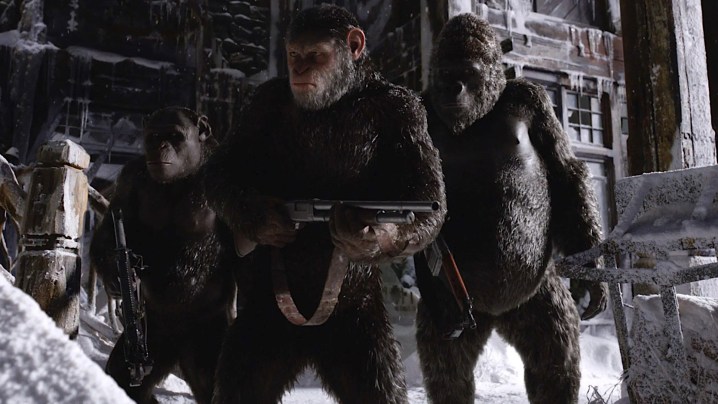
The biggest reason for the success of the most recent Planet of the Apes series — in addition to spectacular filmmaking — is that each film finds a different tone and approach from the one that preceded it. Rise of the Planet of the Apes (2011) is a classic origin story featuring a touching familial love story between man and ape that belies the awfulness of the society deteriorating around it.
The sequel, Dawn of the Planet of the Apes (2014), is set in a post-viral apocalypse in which the chaotic remains of human civilization are juxtaposed against the lush northern California forests where the apes just want to live in peace. In presenting ape civilization, Dawn also allows this series to stake its claim as one of the most stunning feats of visual effects ever committed to cinema. It also showcases Andy Serkis, who plays the ape leader, Caesar, as one of the greatest living screen actors.

Everything — the VFX, the world-building, the performances, Serkis’ especially — tops itself once again in the third movie, which leans further into almost painterly beauty, as well as progressive politics in the form of a searing critique of U.S. warmongering and wall-building xenophobia (all of which may explain why this entry did less domestic box office than its predecessors.).
The movie also continues the series trend of leaning into different genres to put a fresh spin on the storytelling. War is a journey film, a prison break film, and a riff on Apocalypse Now, with Woody Harrelson echoing Marlon Brando’s homicidal Colonel Kurtz from that movie. Finally, the movie is a Biblical allegory, with Caesar as Moses leading his people to the promised land, a trilogy-long journey that concludes with a lovely pastel tableau heralding hope.
Blade Runner 2049 (October 6)
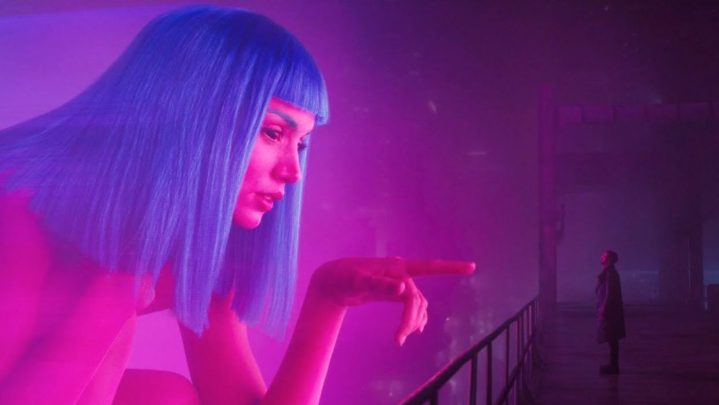
If anybody wasn’t convinced of it five years ago, it’s pretty clear that this movie is all but a masterpiece for its extraordinary visuals and its moving themes about sacrifice and the nature of human identity. Ridley Scott’s original Blade Runner (1982) had become so distinctive, influential, and famous in the decades since it was first declared a flop, it took a lot of courage to consider following it up, especially since the film’s star, Harrison Ford, has repeatedly groused about what a miserable time he had making it. Director Denis Villeneuve confessed to treading on “sacred territory” to even go near a sequel, and surely it could have been a great folly. Instead, he and his collaborators (particularly cinematographer Roger Deakins, who won a long-overdue Oscar for the film) contributed a major work to cinema.
In keeping with our theme, Blade Runner 2049 made two key departures from the original that ensured its artistic success. It expanded the environments, pulling back from the dark urban depths of rainy downtown Los Angeles to reveal much more of the story world, including a Las Vegas made unlivable by a dirty bomb detonation, a gargantuan sea wall holding back the rising ocean, and the city formerly known as San Diego now serving as a massive garbage dump.

The second departure was to cast Ryan Gosling in the movie as a next-gen Blade Runner, Agent K, hunting older model Replicants (like the one played by Dave Bautista), and to have the narrative trace his arc to becoming human. Meanwhile, Ford as OG Rick Deckard turns up so late in the picture, we almost forget he’s in it. When he does appear, though, the movie elegantly links Deckard’s story to K’s and delivers a profound and moving ending in which Villeneuve pays homage to the closing scenes of Kurosawa’s Ikiru, also about a man who discovers his humanity before dying in the snow. (As with The Wolverine, mentioned above, evoking Kurosawa must be the default move for signaling serious artistic ambition.)
Like the original Blade Runner, BR 2049 was a financial “flop,” but also like its forerunner, it is destined for a high place within the canon of serious science fiction, reaching generations to come.
Thor: Ragnarok (November 3)
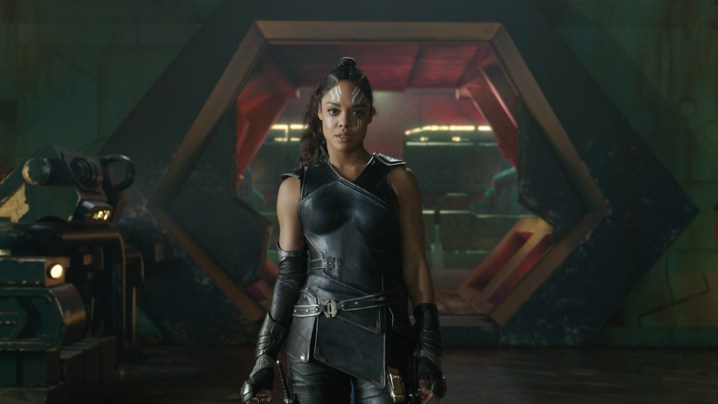
If no one has yet said, “If you want a fresh take on something, give it to a Kiwi,” then I’m saying it here! How serendipitous for Marvel Studios that New Zealand writer/director, and marvelous man-about-town Taika Waititi was on the rise just as they needed a fresh voice to pump life into a turgid series that had all but run aground with the lethargic Thor: The Dark World.
Waititi took one look at the material, decided it should be a lot more fun, and his every instinct proved to be exactly what was needed. Ragnarok is hilarious, visually stunning, sexy, campy, heart-warming, action-packed, and briskly paced. It meaningfully embraces the legacy relationships — between Thor (Chris Hemsworth) and Loki (Tom Hiddleston); the two sons and their father, Odin (Anthony Hopkins); and Thor and Hulk (Mark Ruffalo) — while also introducing great new characters.
Cate Blanchett is a hoot in full leather-clad vamp mode as the Big Bad, while Tessa Thompson as the boozy, apathetic Valkyrie immediately became one of the MCU’s most appealing characters. Throw in Jeff Goldblum doing Goldblumian shtick in dark eye-shadow and you just crossed off nine of the 12 things every movie should pretty much always contain — so much so that every time I watch this movie, I ask myself the same question: Why aren’t more blockbusters like Thor: Ragnarok? It’s no surprise Marvel brought Watiti back for the fourth entry, Thor: Love and Thunder.
Star Wars: The Last Jedi (December 15)
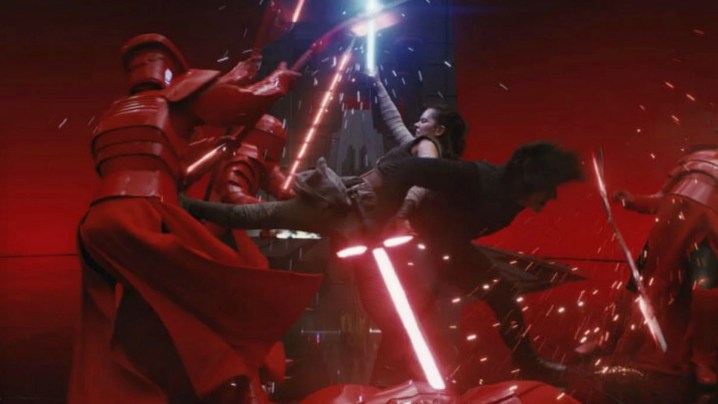
There’s little new to say about this film that hasn’t been expounded upon ad infinitum over the last five years in the tug of war of dissenting opinions between fan camps, which include the opinions of this writer. Since Star Wars movies tend to be compared exclusively to one another, rather than against cinema in general, the debate over value tends to be less about conventional notions of good and bad and more about which episodes best express the Star Wars-ness of Star Wars. Certainly, the uproar over The Last Jedi — and the sequels in general — has focused on this.
Which elements best convey the Star Wars-ness of Star Wars can be hard to pinpoint. The magic that generates Star Wars, that makes our hearts quicken even half glimpsing it on a TV as we stroll through a Best Buy, is in the fusion, not the individual ingredients. J.J. Abrams conjures the brew at occasional moments, and even for an extended sequence or two, in The Force Awakens. Unfortunately, his nascent sorcery was no match for the true dark power in the Disney Star Wars universe: The commercial imperatives that called for a plot so calculated and derivative.
The Last Jedi is also derivative. It’s just derivative in a much more thoughtful, original, and subversive way than The Force Awakens. Star Wars is by now its own genre. And the key to the sustained popularity of any genre is the fresh evocation of genre tropes. One of the tropes that director Rian Johnson spryly updates is the Samurai film influences that inspired Star Wars from the beginning. And yes, we’re back to Kurosawa once again! The Japanese master was a major influence on George Lucas, particularly with his film, The Hidden Fortress.
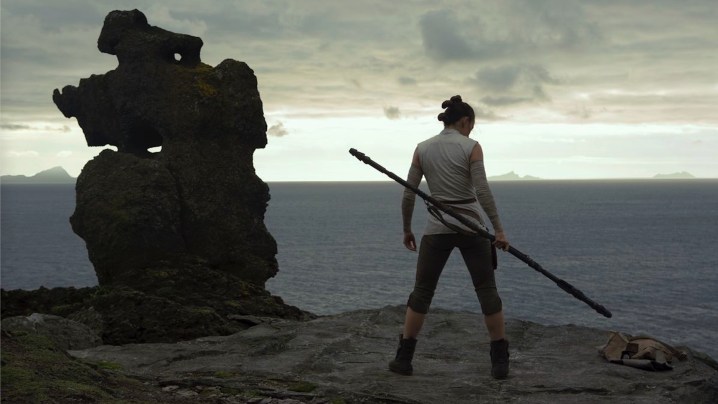
The Samurai design is evident throughout The Last Jedi, in the Snoke/Rey/Kylo Ren Throne Room duel, with its masks and flowing robes and blood-red backgrounds reminiscent of the Japanese Noh drama Kurosawa had evoked in Throne of Blood. The Samurai aesthetic also predominates the Jedi/monk scenes between Luke Skywalker (Mark Hamill) and Rey (Daisy Ridley), as well as Luke’s climactic showdown with Kylo Ren (Adam Driver). The island of Ahch-to, though filmed off the western coast of Ireland, could easily double for Japan. Its rain-swept, rocky terrain and crumbling structures recall the opening of Kurosawa’s Rashomon, while Rey’s triple buns evoke Toshiro Mifune from many of his Samurai films.
As with all of the movies from our vaunted year of sci-fi sequels, both the initial success and the continued acclaim of The Last Jedi are due to its bold departure from the source material in key ways. The shared approach of these films made them great moviegoing experiences in their own right, as well as superior examples of their respective franchises.



